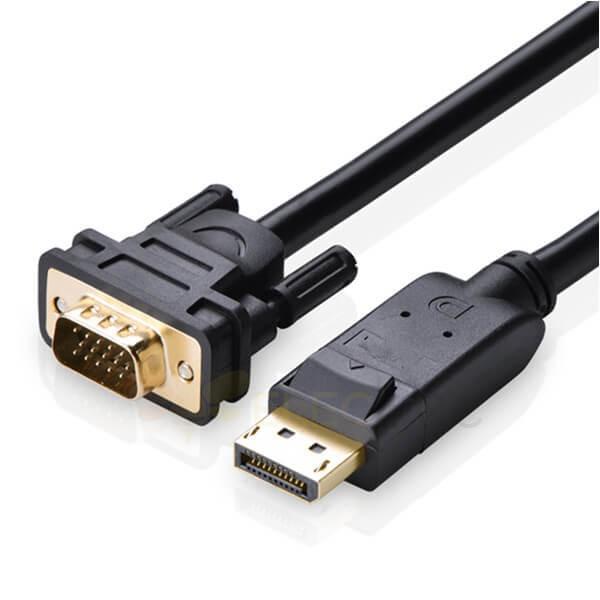If you're someone who frequently uses a computer or a laptop, you might have come across the term "DisplayPort." But what exactly is a DisplayPort, and why is it relevant to your computer usage? In this article, we'll dive into the basics of DisplayPort, explaining what it is, how it works, and why you might want to use it.
What is a DisplayPort?
At its simplest, a DisplayPort is a digital display interface that allows you to connect your computer or laptop to a monitor or display. It was first introduced in 2006 as a replacement for the aging VGA and DVI interfaces, and it has since become the standard for high-performance video and audio transmission between devices.

How does a DisplayPort work?
A DisplayPort works by transmitting digital signals between your computer and your display. Unlike older analog interfaces like VGA and DVI, which transmitted analog signals that were prone to interference and degradation, a DisplayPort sends digital signals that are less susceptible to signal loss and distortion.
One of the key advantages of a DisplayPort is its ability to transmit both video and audio signals over a single cable. This means that you can connect your computer or laptop to a monitor or display and enjoy high-quality video and audio without the need for multiple cables or adapters.
What are the benefits of using a DisplayPort?
If you're still using an older analog interface like VGA or DVI, you might be wondering why you should consider switching to a DisplayPort. Here are some of the key benefits of using a DisplayPort:
- Higher Resolution and Refresh Rates: DisplayPort supports higher resolutions and refresh rates than older analog interfaces. This means that you can enjoy smoother, more detailed images and video on your monitor or display.
- Multi-Stream Transport: DisplayPort supports Multi-Stream Transport (MST), which allows you to connect multiple displays to a single DisplayPort output. This means that you can daisy-chain multiple monitors or displays together, making it easier to set up multi-monitor configurations.
- Audio Support: DisplayPort supports audio transmission, allowing you to enjoy high-quality audio through your monitor or display's speakers or a connected sound system.
- Compatibility: DisplayPort is widely supported by a range of devices, including computers, laptops, monitors, and displays. This means that you can connect your DisplayPort-enabled device to a wide range of displays without the need for adapters or converters.
- Future-Proofing: As newer technologies like 8K resolution and High Dynamic Range (HDR) become more common, DisplayPort is well-positioned to support these technologies. This means that by using a DisplayPort, you can future-proof your device and avoid the need for costly upgrades in the future.
How do I use a DisplayPort?
Using a DisplayPort is relatively straightforward. Here's how to do it:
- Check your computer or laptop's specifications to make sure it has a DisplayPort output.
- Check your monitor or display's specifications to make sure it has a DisplayPort input.
- Connect one end of the DisplayPort cable to your computer or laptop's DisplayPort output and the other end to your monitor or display's DisplayPort input.
- Turn on your computer or laptop and your monitor or display.
- If necessary, switch your monitor or display's input to DisplayPort.
- Enjoy high-quality video and audio on your monitor or display!
Conclusion
In conclusion, a DisplayPort is a digital display interface that allows you to connect your computer or laptop to a monitor or display. It offers a range of benefits over older analog interfaces like VGA and DVI, including higher resolutions and refresh rates, audio support, and compatibility with a wide range of devices. Using a DisplayPort is relatively straightforward, and it can help you enjoy high-quality video and audio on your monitor or display. So if you're looking to upgrade your computer setup, consider using a DisplayPort for the best possible experience!






